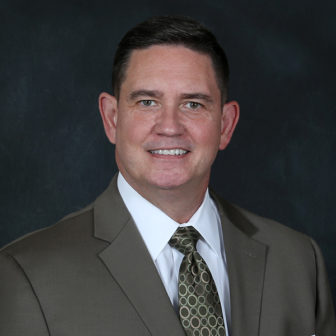
Iakov Filimonov
.
I know from experience the precarious start so many of the children in the foster care system face. I myself was living in an orphanage in North Carolina when a social worker changed my life by placing me in a loving home that would become my forever family.
Fast-forward to today on the other side of the country where I’m leading a team of nearly 5,000 social workers as the head of the Los Angeles County Department of Children and Family Services (DCFS). I’ve never stopped thinking about the social worker who gave me my family — and all the kids like me who need the same help.

Bobby Cagle
With an ethnically diverse population bigger than 40 states, Los Angeles County faces unique challenges when it comes to child welfare. DCFS handles approximately 35,000 cases at any given time. This is a big responsibility, but parents, children, teachers, neighbors and all who have a stake in their well-being need to know they can trust DCFS, an agency of social workers, to do what’s right for kids.
Utilizing innovative practices, new tools and enhanced access to data, DCFS is adjusting and improving our services continuously. We are developing evidence-based programs and services to ensure the best use of resources and therefore the best outcomes for kids and their families.
Specifically, DCFS has pursued several meaningful practice changes including a more robust training program and mentoring for social workers, hiring thousands more social workers to reduce caseloads and implementing a new way that social workers engage with families during their case work.
DCFS has one of the most cutting-edge training programs in the world, implemented in recent years to combine a variety of sciences into a set of tools that help our workers do right by kids. We’ve given up PowerPoint presentations in favor of live simulation labs with experiential training. We use sets representing real-life scenarios a social worker may find themselves in as part of an investigation for child neglect or abuse.
Experiential training is key
In our simulation labs, actors play the parts of biological and foster parents, foster youth and others representing previous DCFS cases. The sets include replicas of apartments, courtrooms, hospitals and more, and are aided by props that teach the social worker to navigate what they may experience in a real-life case investigation. Law enforcement, medical professionals, attorneys and DCFS trainers provide immediate feedback as social workers rehearse the different scenarios. These labs represent what I believe is the future of training for social workers as we are seeing this practice adopted by child welfare agencies across the country.
Our simulation labs take thousands of DCFS workers through different aspects of social work including investigating initial emergency response calls, engaging clients, interviewing parents and children in their homes, interviewing collateral contacts and engaging with medical and law enforcement personnel at hospitals.
Beyond our innovations in training, I’m proud to say we have invested in hiring an additional 2,600 social workers across our 20 regional offices. This has helped reduce the average caseloads for many of our social workers, allowing them to spend more quality time with our children and families.
We’re onboarding these new social workers through a best-in-class mentoring program. To date, we have had hundreds of mentor-to-mentee matches, connecting an experienced social worker with a new hire to provide support and opportunities to learn about engagement, teaming and best practices.
From adversaries to partners
On top of all this comes the core practice model, a new way of engaging families. This system teaches social workers to put families at the center of the conversation, listening to them and better understanding what support they need. By asking, “What are your underlying needs?” instead of “What’s wrong with you?” the model puts the family’s well-being first.
By engaging families through active listening, we are changing the dynamic between biological parents and social workers from that of adversaries to partners for the benefit of the children. This is something that was of great importance to me and became a focus for improving our partnership with parents while I led the Division of Family and Children Services in Georgia.
It can be hard for the public to see the nuances of social work and the ways it has changed in the last few decades. It is always difficult to remove a child from the only family home they’ve known, even when you know it is the best decision for the child’s safety. The vast majority of the time our case decisions are sound. We work every day to improve our practice; however, our social workers are frequently in positions where they must make a judgement call based on the best information available at that time.
DCFS will continue to evolve and look to new ideas for how we can better work with community partners, philanthropy, academia, social workers and our clients to take in feedback and evaluate additional improvements that can be made. Social work must be dynamic and can be innovative. Los Angeles County DCFS is proof of that.
Bobby Cagle is the director of Los Angeles County’s Department of Children and Family Services, the largest child welfare agency in the U.S. He was previously the director of the Division of Family and Children Services in Georgia’s Department of Human Services.





























